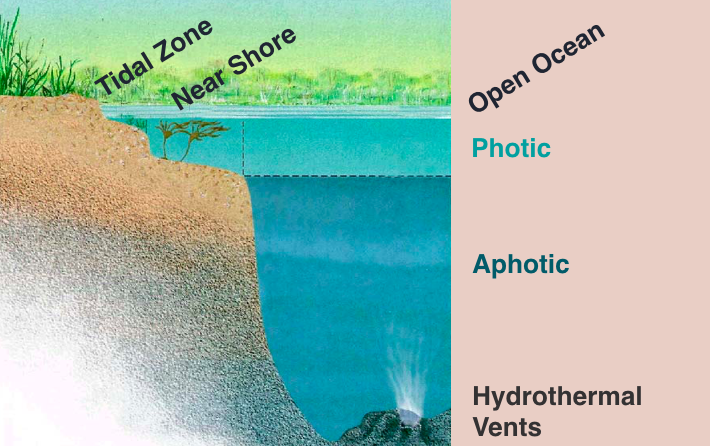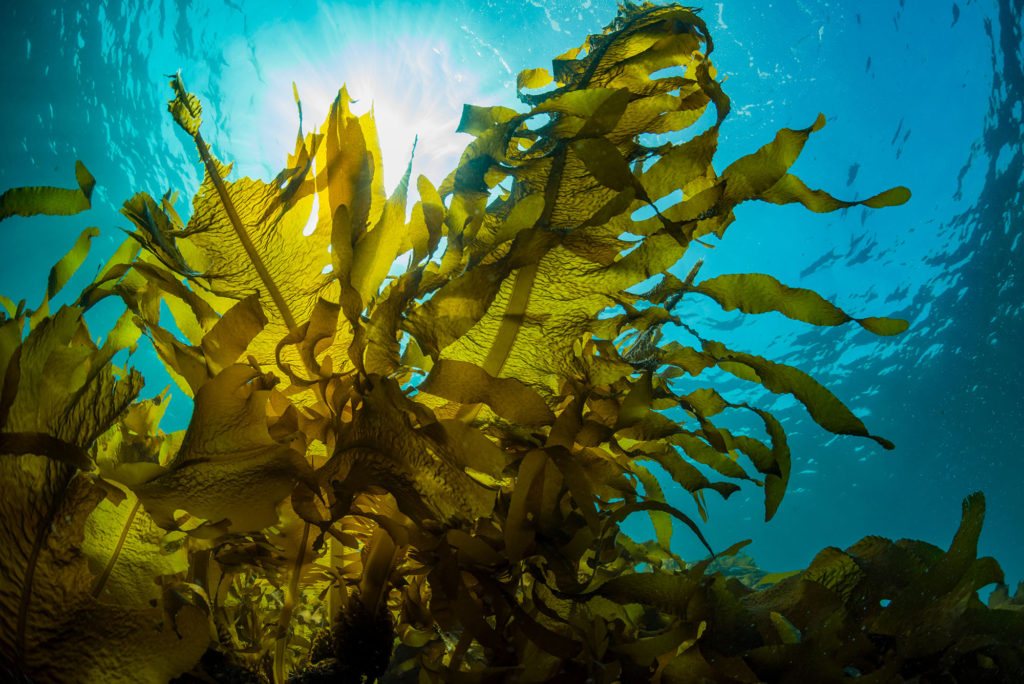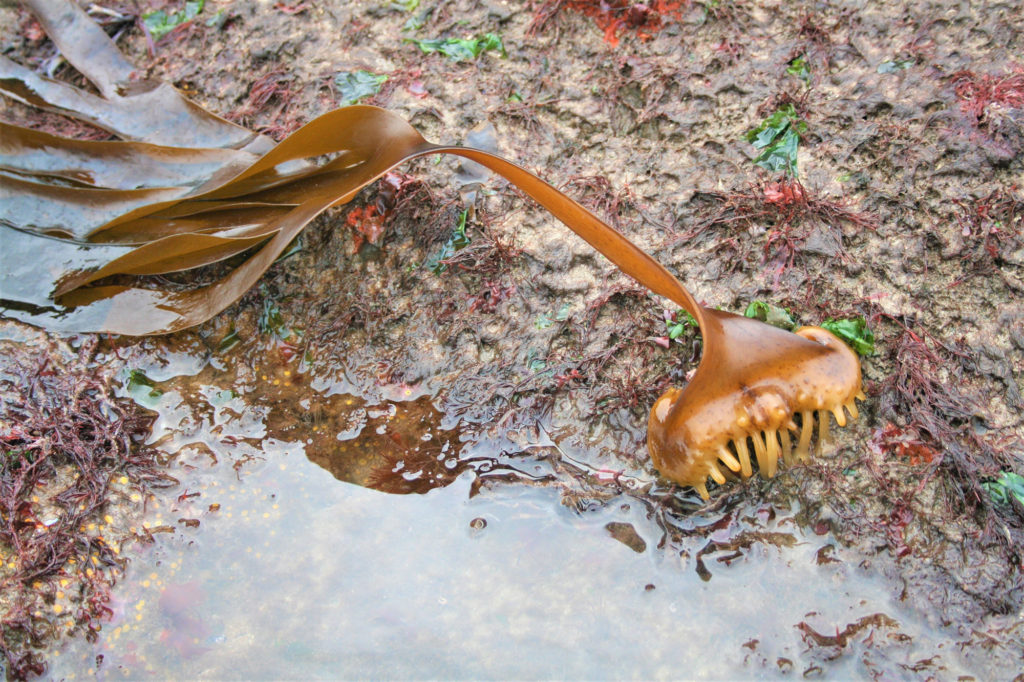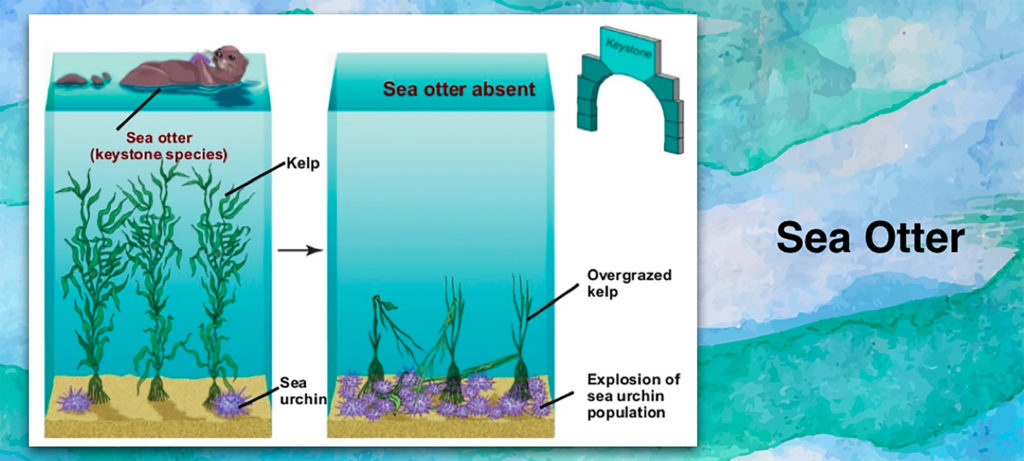
Near Shore Kelp Forests


Near Shore Objectives:
- Describe kelp, including structure and classification.
- Explain the relationship between kelp, sea urchins, and sea otters.
- Define what a keystone species is and how a sea otter is an example.

In the previous section we took a general look at the photic zone of the open ocean. Now, we are closer to shore.
The near shore area is shallow and sunlit, but always under water, unlike the tidal zone. Coral reefs and kelp forests are typically near shore.

Kelp and other “seaweeds” look like plants until you notice you can see right through their “leaves” and that they lack the structures we associate with plants.
Kelp are eukaryotes, but they are classified in Kingdom _____ instead of Kingdom Plantae.
Kelp can adhere to rocks with a “holdfast” structure, but these can be broken free by strong waves and we often see kelp washed up on our Oregon beaches after a storm.


Submerged kelp forests are located off many coastlines, including the coast of the Pacific Northwest.

Sea otters have a close association with kelp.
In recent centuries, sea otters were primarily seen as a source of pelt (skin & fur) or a potential negative impact on human catches of shelled organisms.
Prior to excessive hunting, sea otters lived in kelp forests off coasts of northern California, Oregon, and Washington. Now small numbers are found off Washington and more off the coast of British Columbia.


Sea otters ate sea urchins, and sea urchins are herbivores that can eat kelp. In areas without sea otters, the urchins can significantly overeat the kelp.
The sea otter is an example of a keystone species. A keystone species has a disproportionately large impact on its community, even if it does not have a high biomass. Sea otters had a relatively low biomass, but a significant controlling impact on its food web.

The removal of the sea otters had unintended results that cascaded through near shore food webs.
Kelp protect sea otters and their young, and indirectly the sea otters benefit the kelp.

Examples of terrestrial keystone species that have large impacts on their communities are wolves who alter the behaviors of herds of deer and other prey; and beavers who can create an entirely new landscape and community.
In the next section we head to beach to examine organisms in the sand as well as those that wash ashore.

Check your knowledge. Can you:
- Describe kelp, including structure and classification?
- Explain the relationship between kelp, sea urchins, and sea otters?
- Define what a keystone species is and how a sea otter is an example?







